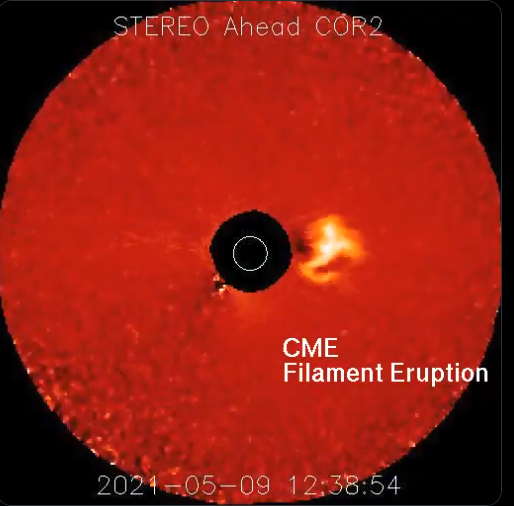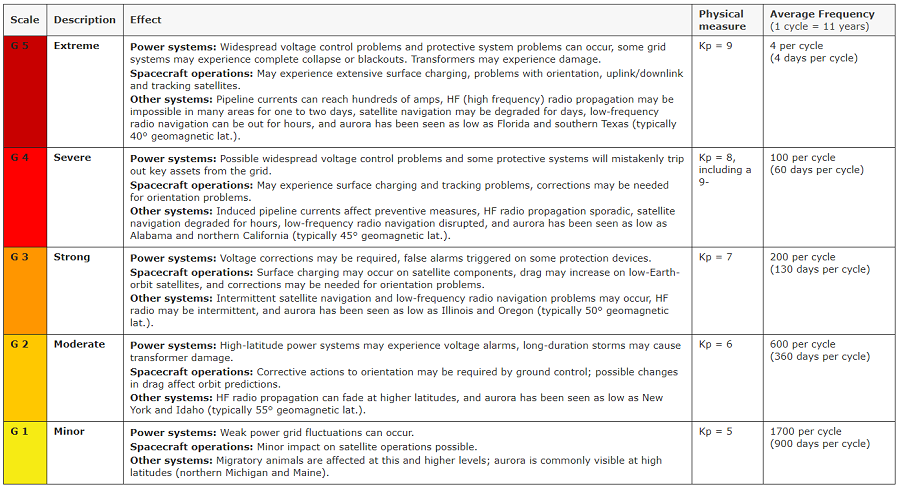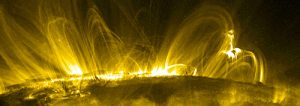
On a scale of 1-5, a Strong Geomagnetic Storm ranked as a 3 is blasting Earth today, the result of a coronal mass ejection that left the sun just days ago. The erupting filament of magnetism leaped off of the Sun on May 9 and finally arrived with impacts to Earth earlier today.
On Twitter, space weather expert Dr. Tamitha Skov wrote, “This solar storm is not an extreme fast moving storm, but it packs a punch! It has a very strong magnetic field, which is why we are seeing such an intense effect at Earth this far.”
The sun has been very busy in recent weeks, triggering different geomagnetic storms of different intensities. A solar wind traveling at 1,118,468 mph hit Earth on April 30; before that, on April 25, Geomagnetic Storm Warnings were issued for Earth from a coronal mass ejection then too.
Today’s G3- Strong geomagnetic storm could create problems on Earth and just above it. Some power systems could experience voltage alarms and transformer damage; voltage corrections may be required. False alarms could be triggered on some protection devices. Because surface charing may occur on satellite components, drag may increase on low-Earth orbit satellites, forcing ground operators to issue flight corrections to fix orientation problems. Satellite GPS navigation can be effected along with low-frequency radio communications. Radio users are taking to social media to discuss how their communications are being impacted by this event now.
A geomagnetic storm as potent as this one could also produce aurora, or “Northern Lights”, as far south as Illinois and Oregon.

Coronal Mass Ejections (CME) occur from time to time, but they aren’t always directed at Earth as this one appears to be. A coronal mass ejection is a significant release of plasma from the solar corona, often following solar flares in solar wind. These huge explosions of plasma originate from highly twisted magnetic field structures on the Sun. When these explosions occur from active sunspot regions on the Sun, it is not uncommon to see them associated with large solar flares. Some fast CMEs can reach the Earth in little as 14 hours, while others may take several days. According to the SWPC, “the first sign of a CME hitting the Earth environment is the plasma density jump due to the shock wave’s passage.” Forecasters use what is known as a coronagraph, which blocks the extremely bright disk of the Sun, so they are able to determine the CME’s size, speed, direction and density.

While typically known for their weather forecasts, the National Oceanic and Atmospheric Administration (NOAA) and its National Weather Service (NWS) is also responsible for “space weather.” While there are private companies and other agencies that monitor and forecast space weather, the official source for alerts and warnings of the space environment is the Space Weather Prediction Center (SWPC). The SWPC is located in Boulder, Colorado and is a service center of the NWS, which is part of NOAA. The Space Weather Prediction Center is also one of nine National Centers for Environmental Prediction (NCEP) as they monitor current space weather activity 24/7, 365 days a year.